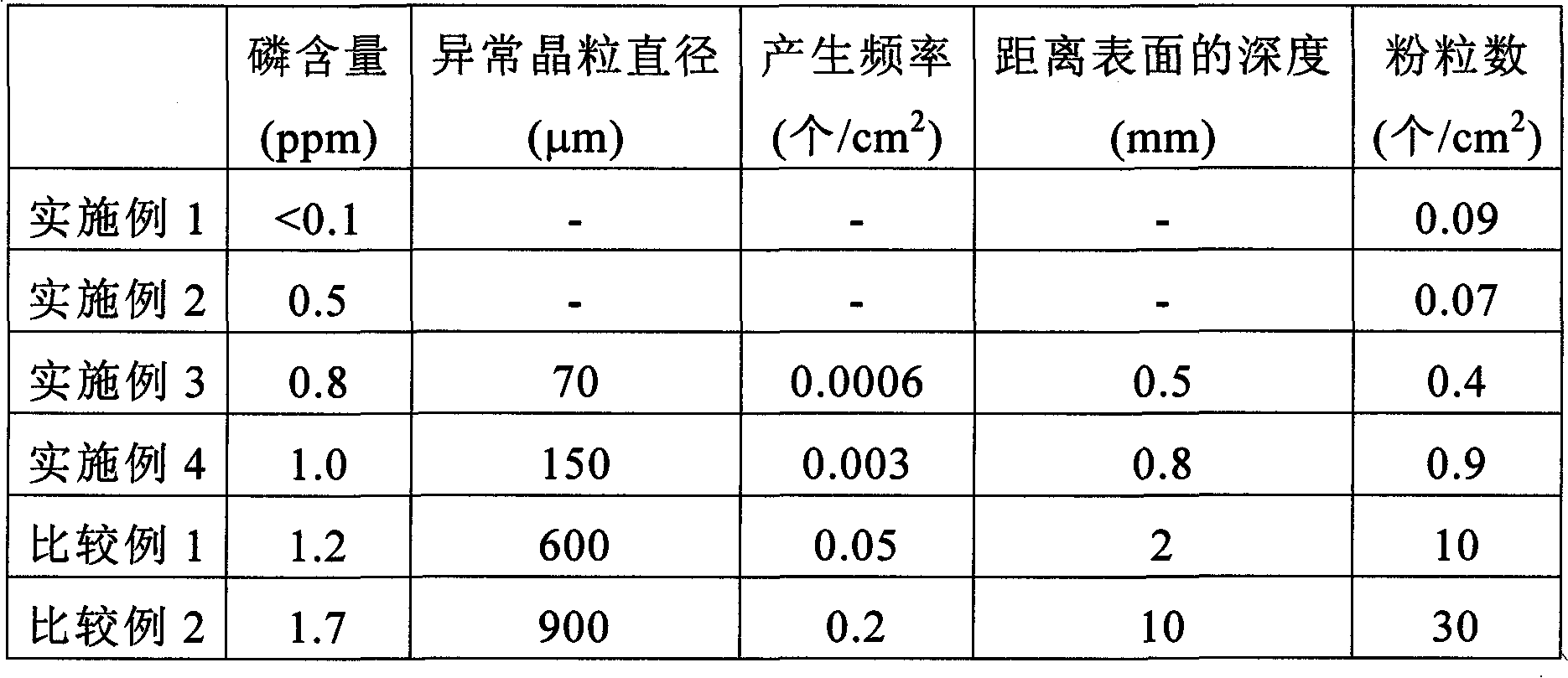Tungsten sintered material sputtering target
A technology of sintered body and sputtering target, which is applied in the direction of sputtering coating, electric solid-state devices, semiconductor devices, etc., which can solve the problems of a lot of time cost, rising manufacturing cost, and non-disclosure of phosphorus
- Summary
- Abstract
- Description
- Claims
- Application Information
AI Technical Summary
Problems solved by technology
Method used
Image
Examples
Embodiment 1
[0046] Fill the graphite mold with tungsten powder with a purity of 99.999%, a phosphorus content of less than 0.1 ppm by weight, and an average particle size of 0.6 μm, and seal it with upper and lower punches of the same material, then depressurize to a vacuum degree of 10 -2 Pa. Then, a high-frequency current of 4000A is fed up and down for 10 minutes to generate plasma between the surfaces of the internal tungsten powder, thereby purifying and activating the surface of the powder. Next, after the power supply was stopped, a pressure of 30 MPa was applied to the mold, and the mold was heated to 1800° C. by an external heating method and kept for 2 hours.
[0047] The relative density of the obtained tungsten sintered body was 99.9%, the average crystal grain size was 30 μm, and the existence of abnormal grain size was not observed. In addition, the oxygen content was 3 ppm.
[0048] As a result of sputtering using this tungsten sintered body as a target, the number of par...
Embodiment 2
[0052] Fill a graphite mold with tungsten powder with a purity of 99.999%, a phosphorus content of 0.5 wtppm, and an average particle size of 0.6 μm. After sealing with an upper punch and a lower punch of the same material, the pressure is reduced to a vacuum degree of 10 -2 Pa.
[0053] As in Example 1, a pressure of 30 MPa is applied while a high-frequency current is applied to generate plasma between the surfaces of the tungsten powder to purify and activate the powder surface, and at the same time pressurize and sinter.
[0054] During the sintering, the temperature was raised to 1550° C. by self-heating caused by the energization of the mold and the filled tungsten powder, and then kept at this temperature for 2 hours.
[0055] The relative density of the obtained tungsten sintered body was 99.8%, the average crystal grain size was 38 μm, and the existence of abnormal grain size was not observed. The oxygen content was 9 ppm. It is carried out under low sintering temper...
Embodiment 3
[0057] Fill a graphite mold with tungsten powder with a purity of 99.999%, a phosphorus content of 0.8 wtppm, and an average particle size of 0.6 μm. After sealing with upper and lower punches of the same material, the pressure is reduced to a vacuum degree of 10 -2 Pa.
[0058] As in Example 1, a pressure of 30 MPa is applied while a high-frequency current is applied to generate plasma between the surfaces of the tungsten powder to purify and activate the powder surface, and at the same time pressurize and sinter.
[0059] During the sintering, the temperature was raised to 1550° C. by self-heating caused by the energization of the mold and the filled tungsten powder, and then kept at this temperature for 2 hours.
[0060] The obtained tungsten sintered body had a relative density of 99.5%, an average crystal grain size of 45 μm, and an abnormal grain size of 70 μm. The existence range of this abnormal particle size is within a thin layer within 0.5 mm from the surface, and ...
PUM
| Property | Measurement | Unit |
|---|---|---|
| particle size | aaaaa | aaaaa |
| particle size | aaaaa | aaaaa |
| particle diameter | aaaaa | aaaaa |
Abstract
Description
Claims
Application Information
 Login to View More
Login to View More - R&D
- Intellectual Property
- Life Sciences
- Materials
- Tech Scout
- Unparalleled Data Quality
- Higher Quality Content
- 60% Fewer Hallucinations
Browse by: Latest US Patents, China's latest patents, Technical Efficacy Thesaurus, Application Domain, Technology Topic, Popular Technical Reports.
© 2025 PatSnap. All rights reserved.Legal|Privacy policy|Modern Slavery Act Transparency Statement|Sitemap|About US| Contact US: help@patsnap.com

